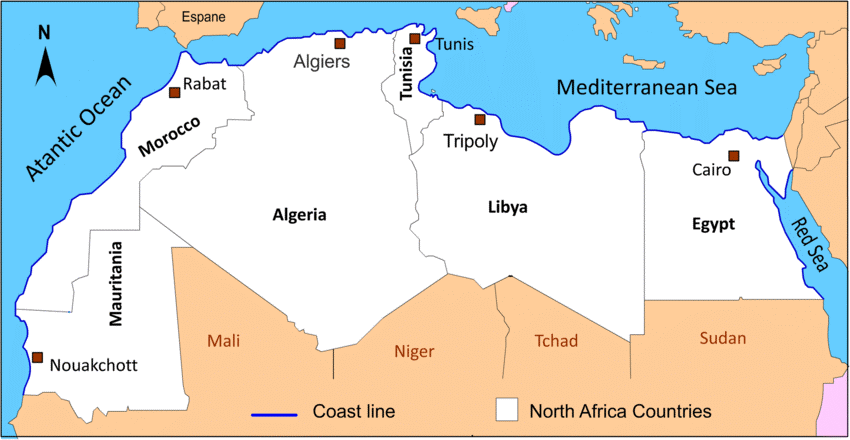
Communication plays a crucial role in shaping cultural diversity in North America. By understanding the concepts of North American communication, we can unlock its potential in promoting inclusivity and integration among diverse communities. Language and media significantly influence communication practices historically and in contemporary society.
Understanding the Concept of North American Communication
North American communication encompasses a range of verbal and non-verbal interactions among individuals and communities across the continent. From the indigenous languages spoken by Native American tribes to the diverse languages brought by immigrants, North America embodies linguistic richness and diversity.
North America is a melting pot of cultures and languages, each contributing to the vibrant tapestry of communication. The continent is home to over 500 indigenous languages, each with unique grammar, vocabulary, and cultural significance. These languages have been passed down through generations, preserving the rich heritage and traditions of Native American tribes.
Furthermore, the arrival of European settlers brought languages such as English, Spanish, and French to North America. These languages have become widely spoken and have shaped the linguistic landscape of the continent. English, in particular, has emerged as the dominant language in many parts of North America, serving as a lingua franca for communication among diverse communities.
The Role of Language in North American Communication
Language is the primary communication tool, enabling individuals to express themselves and share ideas. In North America, languages such as English, Spanish, French, and countless indigenous languages coexist, contributing to the region’s cultural tapestry. Furthermore, bilingualism and multilingualism have become more common, bridging gaps and facilitating connections between diverse groups.
The linguistic diversity in North America reflects the continent’s multicultural nature and fosters a sense of inclusivity and understanding. It allows individuals to communicate with people from different backgrounds, promoting cross-cultural exchange and enriching the social fabric of North American society.
Moreover, language is not limited to verbal communication alone. Non-verbal communication, such as body language, facial expressions, and gestures, is crucial in North American communication. These non-verbal cues can convey emotions, attitudes, and cultural norms, adding depth and nuance to interpersonal interactions.
The Influence of Media in Shaping Communication
With the advent of various communication technologies, media has played a vital role in shaping how information is disseminated and received. From traditional forms such as newspapers, radio, and television to the modern platforms of social media and online journalism, media influences public opinion, cultural values, and the dissemination of ideas.
In North America, the media landscape is diverse and dynamic. News outlets provide a platform for journalists to report on local, national, and international events, keeping the public informed and engaged. Additionally, the rise of social media has democratized communication, allowing individuals to share their perspectives, experiences, and opinions globally.
Media has the power to amplify diverse voices and influence cross-cultural understanding. It serves as a bridge between different communities, facilitating dialogue and fostering empathy. Through media, individuals can gain insights into different cultures, challenge stereotypes, and promote inclusivity.
Furthermore, media plays a significant role in shaping popular culture and entertainment in North America. Movies, television shows, and music reflect society’s values, aspirations, and shared experiences. They serve as a common ground for people to connect, relate, and celebrate their cultural heritage.
Overall, the influence of media in North American communication cannot be underestimated. It can shape perceptions, challenge norms, and foster a sense of community. As technology continues to evolve, the role of media in communication will only become more prominent, shaping how individuals interact and understand one another.
The Intersection of Communication and Cultural Diversity
The intersection of communication and cultural diversity gives rise to unique opportunities and challenges. Embracing multilingualism and promoting cultural diversity can enrich society and foster inclusive communities.
When we think about the intersection of communication and cultural diversity, we are reminded of the countless ways language and culture intertwine. Through language, we express our thoughts, emotions, and ideas; through culture, we shape our identities and understand the world around us.
One of the most fascinating aspects of cultural diversity is the impact of multilingualism. In North America, for example, the multilingual landscape is a testament to the region’s cultural mosaic. Communities can bridge cultural gaps and foster mutual understanding by valuing and preserving diverse languages.
Each language carries unique perspectives, values, and traditions, contributing to North America’s cultural landscape. From Spanish to Mandarin, French to Tagalog, these languages reflect the diversity of the people who speak them and add depth and richness to the tapestry of cultures that coexist in the region.
The Impact of Multilingualism on Cultural Diversity
North America’s linguistic diversity is a source of pride and celebration. It is a reminder that cultural diversity is not just about the coexistence of different cultures but also about preserving and promoting the languages that embody those cultures.
When we embrace multilingualism, we open ourselves to a world of possibilities. We gain access to different ways of thinking, different ways of expressing ourselves, and different ways of understanding the world. This, in turn, enriches our own cultural experiences and broadens our horizons.
Moreover, multilingualism has a profound impact on cultural diversity by fostering inclusivity. When we encourage using multiple languages, we create an environment where everyone’s voice can be heard and valued. This promotes a sense of belonging and empowers individuals to express their cultural identities without fear of exclusion or marginalization.
The Role of Communication in Cultural Integration
Communication acts as a bridge that connects different cultures. Effective communication allows individuals from diverse backgrounds to engage in dialogue, exchange experiences, and forge lasting connections. This promotes cultural integration, fostering an inclusive society that celebrates diversity.
Effective communication is about speaking the same language and understanding and appreciating different communication styles, norms, and cultural nuances. It requires active listening, empathy, and a willingness to learn from one another.
When we communicate effectively across cultures, we break down barriers and build bridges of understanding. We learn to appreciate our similarities and differences, and we find common ground that unites us as human beings.
Furthermore, communication plays a crucial role in promoting cultural integration. It allows us to share our stories, traditions, and values with others, fostering community and belonging. We can create spaces where diverse perspectives are tolerated and celebrated through communication.
The Evolution of North American Communication
In the face of rapid technological advancements, the communication landscape in North America has undergone transformative changes.
The Impact of Technology on Communication
Advances in technology have revolutionized the way individuals communicate. From telephones to the internet, technology has enhanced accessibility and global connectivity. Instant messaging, video conferencing, and social media platforms have facilitated instantaneous communication across vast distances, transcending borders and cultural barriers.
The Shift from Traditional to Modern Communication Methods
As technology evolves, traditional forms of communication, such as face-to-face interactions, written letters, and landline telephones, have given way to digital communication. This shift has advantages and disadvantages, as it allows for immediate connections but may also lead to a lack of in-person interactions and potential misinterpretations.
The Future of North American Communication
Looking ahead, digital media and globalization will continue to shape the future of communication in North America.
The Role of Digital Media in Future Communication
Digital media platforms will play an increasingly prominent role in facilitating communication. Social media, online forums, and streaming platforms provide opportunities for individuals to share diverse cultural experiences, foster dialogue, and promote cultural understanding, all within a digital landscape.
The Impact of Globalization on North American Communication
Globalization has interconnected societies and transcended geographical boundaries. As North America engages with the global community, cultural exchange and diverse perspectives have become more accessible. This exchange of ideas and experiences enriches communication practices and promotes cultural diversity.
The Challenges and Opportunities in North American Communication
While communication in North America presents unique opportunities for cultural integration and diversity, it also faces significant challenges.
Overcoming Language Barriers in Communication
Language barriers can hinder effective communication and limit cross-cultural understanding. However, by investing in language education programs and translation services, individuals can bridge these gaps and promote meaningful dialogues celebrating cultural diversity.
The Potential of Communication in Promoting Cultural Diversity
By recognizing the potential of effective communication, North America can foster an inclusive environment that values diversity. Communication acts as a catalyst for change, promoting understanding, empathy, and respect across cultures.
Conclusion
North American communication is vital in promoting cultural diversity and integration. Language, media, technology, and globalization contribute to the evolution of communication practices. By recognizing the challenges and embracing the opportunities, North America can harness the power of communication to build inclusive communities that celebrate and value the diverse cultures that enrich our society.




